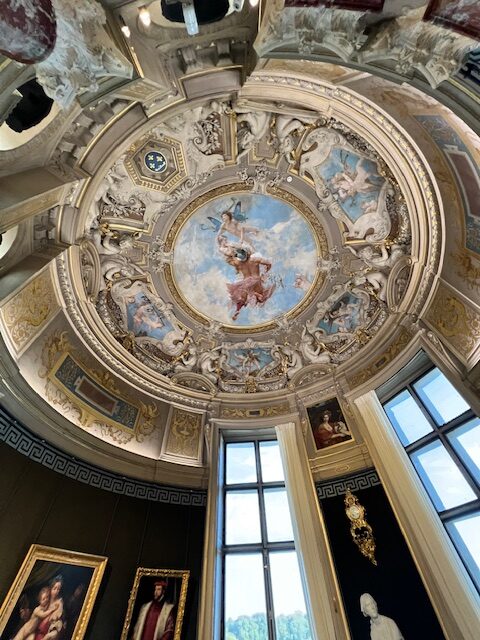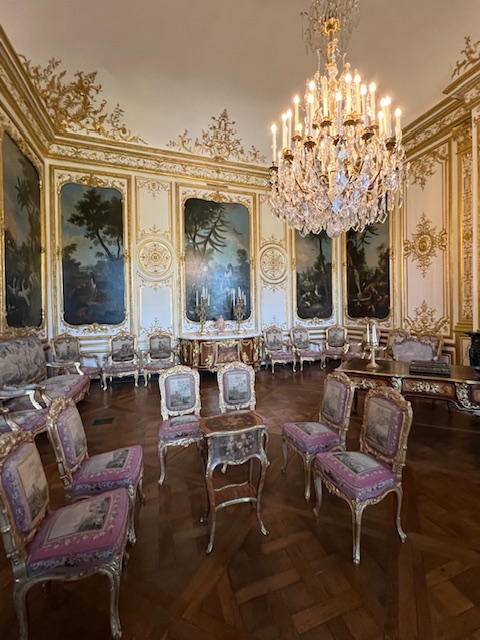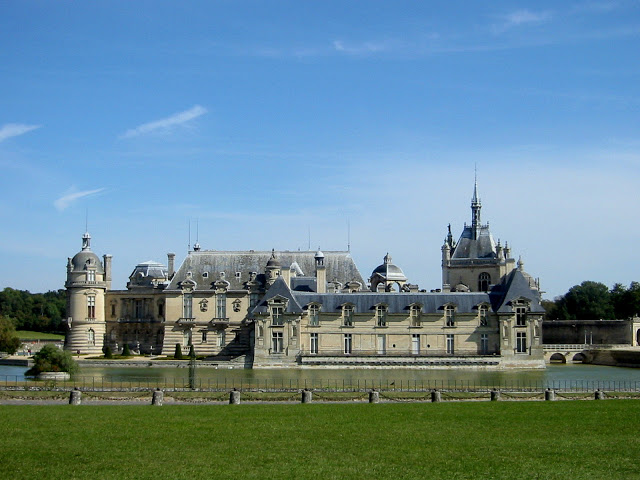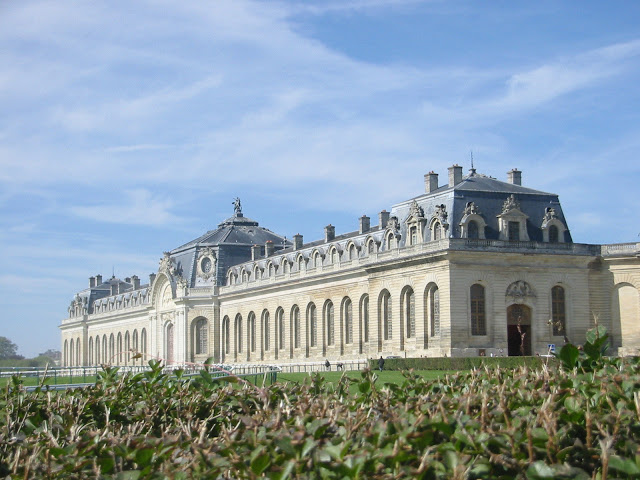The Chateau de Chantilly is enormous and impressive.
It sits on nearly 20,000 acres in the middle of one of largest forests in the country. As with many of the chateau in France, Chantilly began as a defense fortress constructed in the middle-ages. It was transformed into a magnificent residence over the subsequent centuries.
Today, the overall chateau it divided into two principle parts: the grand chateau, pictured in the background to the left, and the petite chateau, in the foreground on the right. Together, they reflect a variety of architectural styles and influences. In fact, one can very well see that the foundation of the structure is indeed like a fortress, while the turrets are very eclectic, combining neoclassic and baroque architectural elements.
The interior space is beautifully maintained and well appointed. The most recent resident, Henri d’Orleans duc d’Aumale (1822 – 1897), was an avid collector of paintings, furniture and object d’art. He left the chateau fully furnished to be kept as a museum. Everything is in place as it was when he lived there.

In the gallery, one can see the paintings by Delacroix, Corot, Poussin, Ingres and others. The console in the sitting room photographed above belonged to Louis XVI. It was removed from Versailles after the Revolution. The chandelier is by Baccarat and the tapestries on the chairs are by Beauvais. The quality and condition of the collection is remarkable.
In reference to the console, I want to make a larger comment on the French Revolution. Many people have the false impression that the tumultuous and violent period leading up to and during the Revolution left the country in a state of total havoc. This is true to a limited extent. It is almost impossible to find pre-Revolution tapestries that contain gold or silver thread or sterling silver flatware and serving pieces because they were stolen and melted down for monetary purposes. But, when the government was transformed from a Monarchy to a Republic, property of Louis XVI and Marie-Antoinette was seized and inventoried in an orderly fashion. Yes, the Bastille was stormed by an angry mob, but it was a prison containing no valuable objects. The Chateau de Versailles and the Louvre were never stormed and their contents were preserved by the State as part of what the French refer to as le patrimoine d’Etat; i.e., state property.

OK…enough editorial! Getting back to the Chateau…
The grounds are equally spectacular. They were designed by the famous landscape architect André LeNotre, who also designed the grounds of Vaux-le-Vicomte and Versailles. Anyone who has visited either of those two chateaux can see the similarity of design. Key elements for which LeNotre is known include a large central axis bordered by parterres and fountains, leading to a man-made lake.
The Grand Ecuries, or horse stable, are just across the road. This structure very well could have been named the Enorme Ecuries because of its size. The Ecuries runs the length of the famous Chantilly race track. The building holds the Museum of Living Horses, with breeds from all over Europe. There is also a performance ring in the central portion where free equestrian dressage shows take place daily. On the day that I visited, an outdoor horse festival was taking place in the infield of the Chantilly Race Track. It was a bit of carnival atmosphere, packed with families and vendors.
I was very impressed with all that Chantilly had to offer and I would definitely recommend a visit to anyone with an interest in seeing one of the great chateaux of France.





Leave a Reply